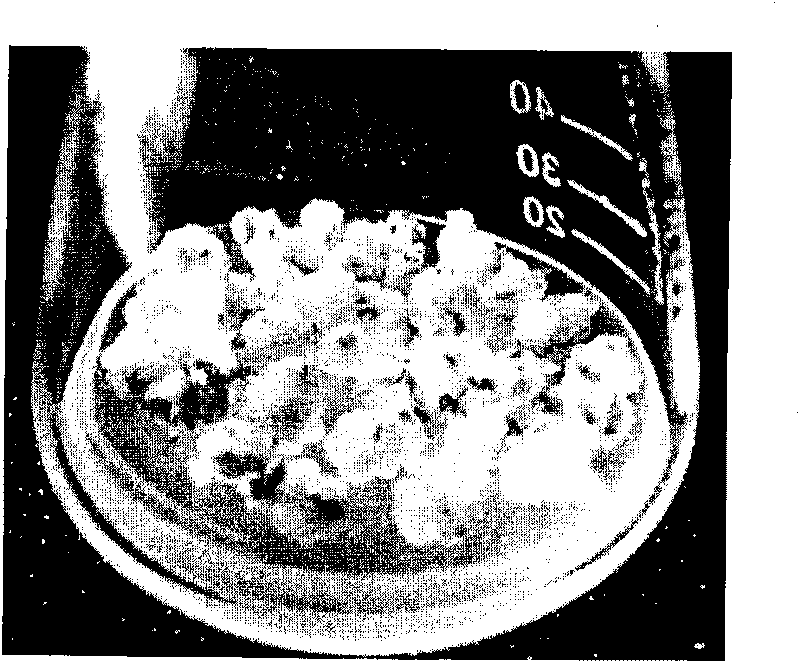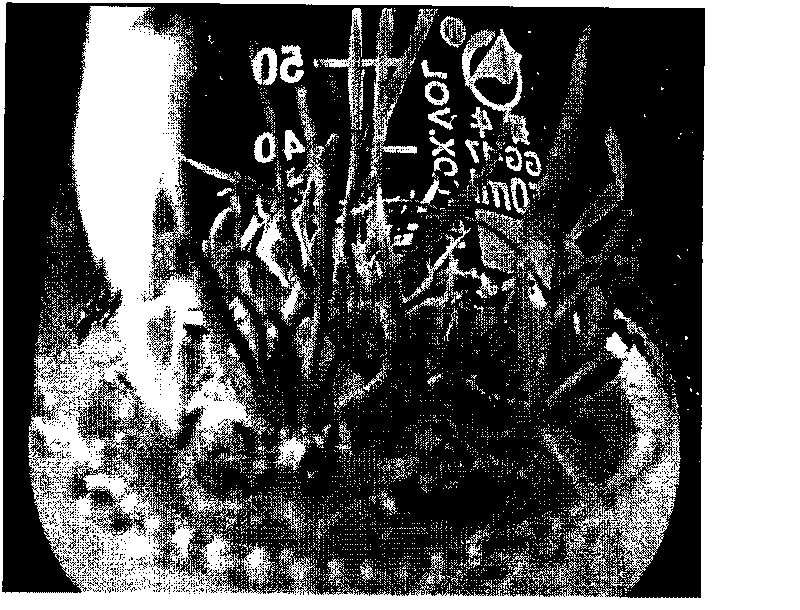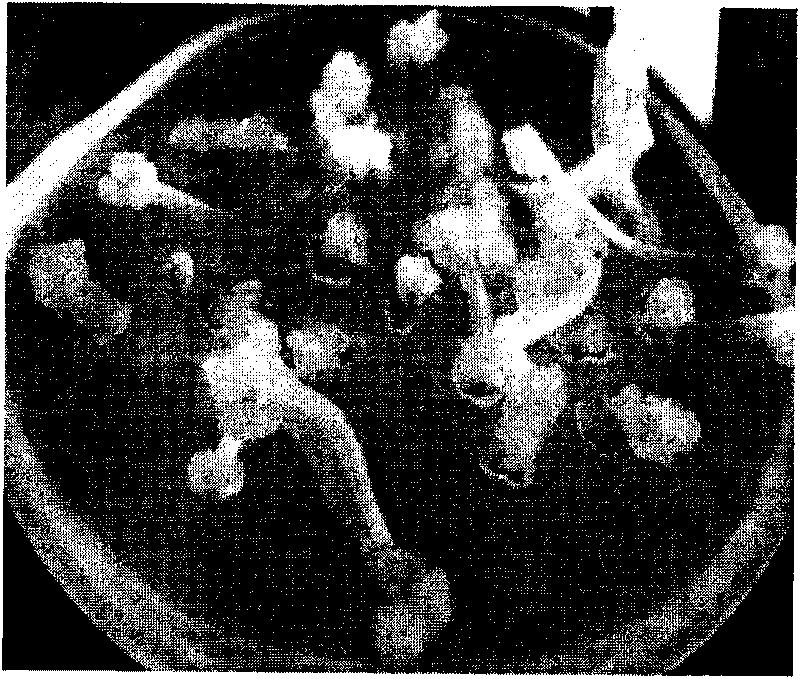Method of wheat test-tube plantlet blade repeated regeneration
A technology of test-tube seedlings and leaves, applied in the field of plant tissue culture, can solve the problems of repeated regeneration of wheat test-tube seedlings and other problems
- Summary
- Abstract
- Description
- Claims
- Application Information
AI Technical Summary
Problems solved by technology
Method used
Image
Examples
Embodiment 1
[0049] The immature ears of Jinan 177 wheat 14 days after flowering were taken and sterilized by immersing them in 75% alcohol by volume for 5 minutes. Peel the immature wheat grains from the ears and place them in a sterile petri dish, clamp them with the ventral groove downward, and pick out the immature embryos with a dissecting needle. Select immature embryos with a diameter of 1mm, and inoculate them with the scutellum up in MS basic components + B5 vitamins + 146mg / L glutamine + 200mg / L hydrolyzed casein + 1mg / L 2,4-D + 7g / L agar + 30g / L Sucrose callus induction medium I (pH 5.8), 25 ℃, dark culture. The embryogenic callus was obtained in 2 weeks, and the induction rate reached 100%.
[0050] Excise the embryo directly grown from the immature embryo on the induced callus, and then transfer the induced callus to MS basic component + B5 vitamin + 146mg / L glutamine + 2mg / L 2,4-D+ On the embryogenic callus subculture medium of 7g / L agar+30g / L sucrose (pH value 5.8), the li...
Embodiment 2
[0057] The immature ears of Chinese spring wheat 15 days after flowering were taken and sterilized by soaking them in 75% alcohol for 3 minutes. Peel the immature wheat grains from the ears and place them in a sterile petri dish, clamp them with the ventral groove downward, and pick out the immature embryos with a dissecting needle. Select immature embryos with a diameter of 0.8mm, and inoculate them with MS basic components + B5 vitamins + 130mg / L glutamine + 180mg / L hydrolyzed casein + 0.5mg / L 2,4-D + 6g / L agar + 25g with the scutellum up / L sucrose callus induction medium I (pH 5.8), 25 ℃, dark culture. The embryogenic callus was obtained in 2 weeks, and the induction rate reached 99%.
[0058] Excise the embryo directly grown from the immature embryo on the induced callus, and then transfer the induced callus to MS basic ingredient + B5 vitamin + 130mg / L glutamine + 1mg / L 2,4-D+ On the embryogenic callus subculture medium of 6g / L agar+25g / L sucrose (pH 5.8), the light in...
Embodiment 3
[0065] The immature ears of Wheat No. 3 were taken 16 days after flowering and soaked in 75% alcohol for 8 minutes to sterilize. Peel the immature wheat grains from the ears and place them in a sterile petri dish, clamp them with the ventral groove downward, and pick out the immature embryos with a dissecting needle. Select immature embryos with a diameter of 1.2mm, and inoculate them with MS basic components + B5 vitamins + 170mg / L glutamine + 220mg / L hydrolyzed casein + 2mg / L 2,4-D + 8g / L agar + 35g / L sucrose on callus induction medium I (pH 5.8), cultured at 25°C in the dark. The embryogenic callus was obtained in 2 weeks, and the induction rate reached 100%.
[0066] Excise the embryo directly grown from the immature embryo on the induced callus, and then transfer the induced callus to MS basic ingredient + B5 vitamin + 170mg / L glutamine + 2mg / L 2,4-D+ 8g / L agar + 35g / L sucrose on the subculture medium of embryogenic callus (pH 5.8), carry out day and night light cycle ...
PUM
 Login to View More
Login to View More Abstract
Description
Claims
Application Information
 Login to View More
Login to View More - R&D
- Intellectual Property
- Life Sciences
- Materials
- Tech Scout
- Unparalleled Data Quality
- Higher Quality Content
- 60% Fewer Hallucinations
Browse by: Latest US Patents, China's latest patents, Technical Efficacy Thesaurus, Application Domain, Technology Topic, Popular Technical Reports.
© 2025 PatSnap. All rights reserved.Legal|Privacy policy|Modern Slavery Act Transparency Statement|Sitemap|About US| Contact US: help@patsnap.com



